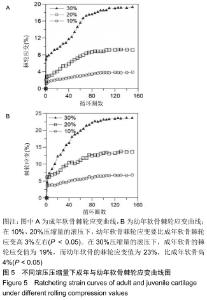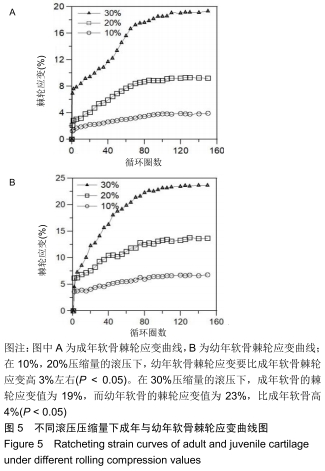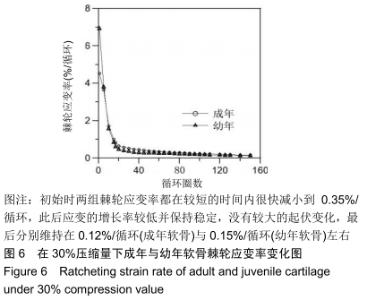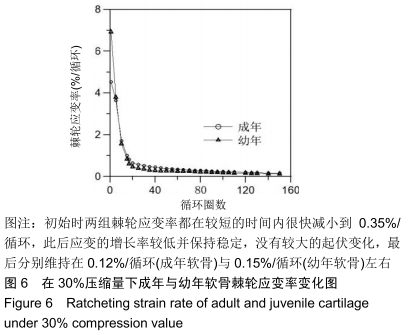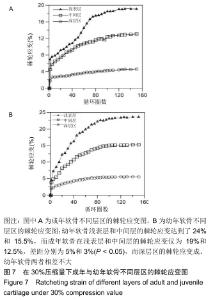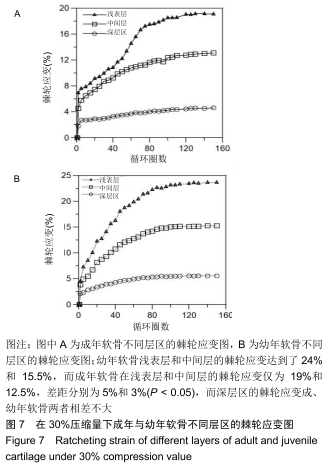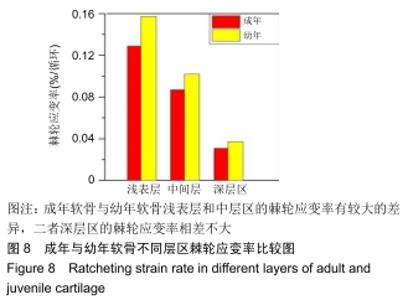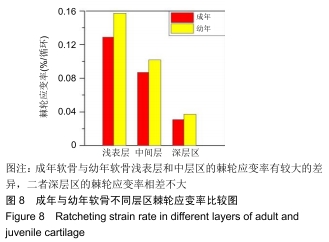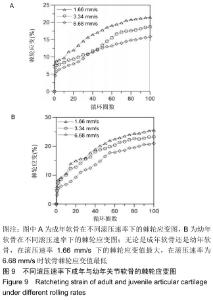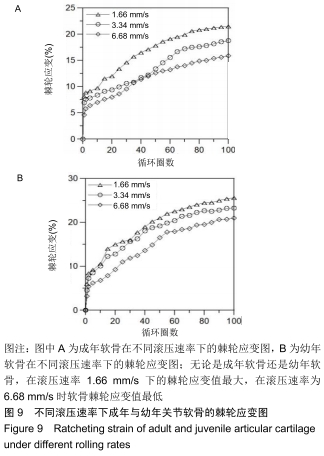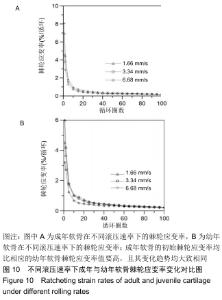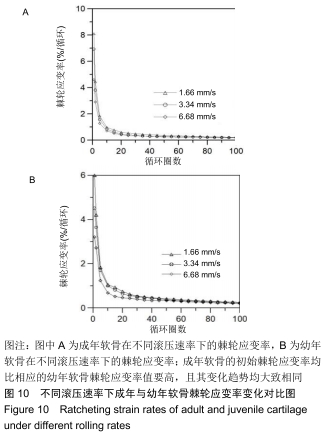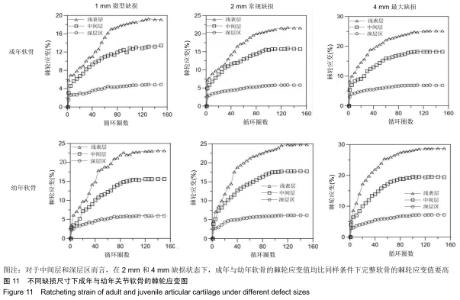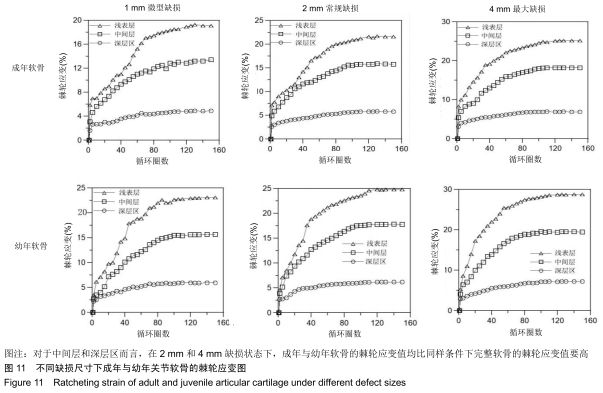[1] 张光铂,李中实.膝关节功能评定[J].中国康复医学杂志, 1991, 6(2):80.
[2] 马克勇.老年性骨关节炎的分子生物学机制及治疗展望[J].中国老年学杂志,2010,30(20):3035-3036.
[3] 陈凯,张德坤,戴祖明,等.牛膝关节软骨的力学承载特性及其有限元仿真分析[J].医用生物力学,2012,12(27):675-680.
[4] 李春江,卫小春.力学因素在功能性软骨组织工程学中的作用[J].生物骨科材料与临床研究,2007,4(3):27-30.
[5] GUILAK F, BUTLER DL, GOLDSTEIN SA, et al.Functional tissue engineering.USA: Springer,2004:332-400.
[6] FAN Z, ZHANG C, LIU H, et al.A Novel Model for the Mass Transfer of Articular Cartilage: Rolling Depression Load Device.Commun Comput Inform Sci.2010;135:580-585.
[7] 宴丹,周广东,曹谊林.关节软骨生化结构及其与力学关系研究进展[J].上海交通大学报,2009,29(30):341-344.
[8] 戴尅戎.力学生物学在骨与软骨研究中的应用[J].中华骨科杂志, 2006,26(6):429-431.
[9] SUN DN, GU WY, GUO XE, et al.A Mixed Finite Element Formulation of Triphasic Mechano-Electrochemical Theory For Charged, Hydrated Biological Soft Tissues, International Journal For Numerical Methods In Engineering.Numer Meth Eng.1999;45(10):1375-1402.
[10] 刘东东.幼年和成年关节软骨的准静态力学性能和棘轮性能研究[D].天津:天津理工大学,2017.
[11] 吕雪莹.猪膝关节软骨的动态力学性能测试[D].杭州:浙江大学, 2014.
[12] 王亚博.骨折技术结合富血小板血浆治疗兔膝关节软骨损伤的生物力学研究[D].石家庄:河北医科大学,2015.
[13] 许可,马信龙,张园,等.异常应力条件下关节软骨的变化[J].中国组织工程研究,2010,14(46):8559-8562.
[14] 高丽兰,刘志动,张春秋,等.关节软骨不同层区的率相关性能研究[J].医用生物力学,2014,29(2):141-145.
[15] THEODOROPOULOS JS, DECROOS AJ, PETRERA M, et al. Mechanical stimulation enhances integration in an in vitro model of cartilage repair.Knee Surg Sports Traumatol Arthrosc. 2016;24(6):2055-2064.
[16] 秦晓怡.非围限循环压缩载荷作用下关节软骨的棘轮行为研究[D].天津:天津理工大学,2016.
[17] 段鑫,陈强,李浪,许钊,等.两种软骨缺损模型制备效果比较[J].中国修复重建外科杂志,2016,30(10):1220-1224.
[18] GREEN JD, TOLLEMAR V, DOUGHERTY M, et al. Multifaceted signaling regulators of chondrogenesis: Implications in cartilage regeneration and tissue engineering. Genes &Dis. 2015;2(4):307-327.
[19] ARGATOV I, MISHURIS G. Elliptical contact of thin biphasic cartilage layers: Exact solution for monotonic loading.J Biomech. 2011;44(4):759-761.
[20] 王彦明,余家阔,于长隆,等.关节镜下微骨折术修复膝关节软骨全层缺损的临床疗效观察[J].中国运动医学杂志, 2006,25(6): 651-654.
[21] 刘东东,高丽兰,张春秋,等.循环加载下关节软骨的棘轮应变及理论预测[J].医用生物力学,2017,32(3):274-279,287.
[22] JIANG Y, SEHITOGLU H.A model for rolling contact failure. Wear.1999;224:38-49.
[23] LI B, WANG X, WANG Y, et al.Past, present, and future of microcarrier-based tissue engineering.J OrthopTransl. 2015 ; 3(2):51-57.
[24] DOHERTY M. Osteoarthritis: diagnosis and medical/surgical management. Ann Rheum Dis. 1992;51:1028.
[25] BACHRACH NM, MOW VC, GUILAK F.Incompressibility of the solid matrix of articular cartilage under high hydrostatic pressures.J Biomech.1998;31(5):445-451.
[26] 邵越峰,卫小春.不同力学刺激对软骨基质代谢的影响[J].中国骨与关节损伤杂志,2008,23(11):965-968.
[27] ATESHIAN GA, WARDEN WH, KIM JJ, et al.Finite deformation biphasic material properties of bovine articular cartilage from confined compression experiments. J Biomech. 1997;30(11-12):1157-1164.
[28] 翁习生,仉建国,张嘉.髌骨软骨粘弹特性的实验研究[J].中国医学科学院学报,1999,21(1):53-54.
[29] 王尚城,王冬梅,汪方,等.人骨拉伸和压缩力学的性能测试[J].中国组织工程研究,2013,17(7):1180-1184.
[30] 陆宁,卢世璧,王继芳,等.采用自体成熟关节软骨细胞的软骨组织工程修复[J].中华实验外科杂志,2005,22(3):293-296.
|
